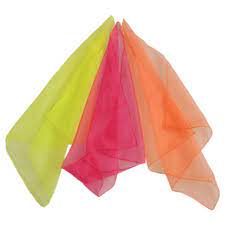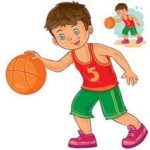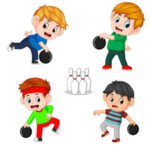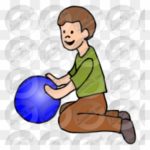
by Neetu | May 31, 2021 | Manthan
Learning Outcome
Follow the instructions and engage in different locomotor skills and demonstrate 3 different pathways while doing the activity. Experiment with different ways of tossing and then catching a scarf.
Activity Description
Shapes & Directions
Scarf in front of the body, make giant clockwise circles.
Scarf overhead, make small counterclockwise circles.
Scarf out to the right side, make a square.
Scarf out to the left side, make a triangle.
Switch hands and repeat all of the above.
Locomotor Moves
Scarf like a horse’s tail, gallop in open space.
Scarf scrunched like a rabbit’s tail, jump in open space.
Fold in half like a deer’s short tail, leap in open space.
Scarf long like a cheetah’s tail, run in open space.
Required Material
4 Boundary cone, 2 scarf

by Neetu | May 31, 2021 | 1st, Fitness Activity, Manthan
Learning Outcome
Today you are going to perform the locomotor skill – Hopping.
Activity Description
When “Teacher says…”, children look at what the Teacher is doing and then follow the command.
Signal to the children to stop after 5-10 seconds, then gives a new command.
If I do not say “Simon says…” before a command, children should remain still.
Once the leader has done several commands, children may be given turns to lead the activity.
Suggestions for commands:
Jump on the spot, Hop on the spot on one foot, March like a soldier on the spot (knees up), Walk around slowly, Follow the leader while walking quickly, Jump around on two feet, Hop around on one foot, Skip around, Walk like a crab, Walk like a duck, Leap like a frog.
Place hoops around the activity space (one hoop per child).
Explain that the hoops are islands.
Call out a way for children to move (see Activity 1 above).
Children must move around the “water” between and around the islands (hoops).
When I call “shark attack!”, children must jump onto an island to be safe.
Once you have played a few rounds, take away half of the hoops.
Children are now allowed to “share” their island with one other friend.
Required Material
4 Boundary cone

by Neetu | May 31, 2021 | Manthan
Learning Outcome
How to find personal space with the help of bubble
Activity Description
Explain that the children will now make shapes with their bodies within their space bubble.
Demonstrate that the space bubble gets bigger or smaller depending on the size of the shape.
Ask the children to imitate you as you make the following shapes:
Star (arms and legs stretched wide, standing or lying down)
Ball (crouch and tuck as small as possible)
Candle (stand straight and tall with arms above head)
Flamingo (stand on one leg with arms out to sides)
Give the children an opportunity to invent their own shapes.
If time permits, ask a few students to demonstrate their shapes and ask the rest to imitate
Required Material
4 Boundary cone, Spot marker

by Neetu | May 28, 2021 | Manthan
Learning Outcome
This activity develops coordination, balance, and strength as kids try to imitate the movements of a crab.
Activity Description
In a flat, open area, show your child how to crab walk.
Squat on the ground, place hands behind you and lift your hips off the ground.
Start “walking” using hands and feet.
Play follow the leader as you crab walk.
Variations
• Challenge your child to a crab walk race over a short distance.
• If several children are present, play a game of tag in a confined area while crab walking.
Required Material
4 Boundary cone

by Neetu | May 28, 2021 | Manthan
Learning Outcome
This activity develops coordination of arms and torso, fine motor control, and the ability to “read” distances. These skills transfer to sports and activities that involve throwing an object accurately over a perceived distance (e.g., balls, frisbees, ribbons, sticks, batons).
Activity Description
Create a series of “golf holes” by placing the buckets, baskets, or boxes around your living room, hallways, and other available spaces.
Place scraps of cardboard or paper on the floor to mark “golf tees” where you throw from.
With your child, take turns standing on each golf tee and tossing a beanbag or ball underhand into the bucket, basket, or box.
Continue tossing at each hole until each of you sinks one shot.
Go around the circuit of “golf holes” and keep track of how many tosses each of you requires to sink a shot at each hole.
If your child has too much difficulty sinking shots, consider having different tees with different distances for parent and child.
Variations
As your child masters the game using short distance tosses, challenge them by increasing the distances
After your child masters the underhand throw, play again using overhand throws
Required Material
Beanbags, soft foam balls, or balls of socks Buckets, laundry baskets, or large cardboard boxes.Pieces of cardboard or paper to mark “golf tees”












